 old & modern / cuteness & irony
old & modern / cuteness & ironyClick here to go to the first part of this article.
If that doesn't work, try this.
(i'm still working on edits and image credits and references and links so bear with me)
When I said that Alison's appearance has an old-fashioned quality, I meant that, while she is obviously considered very attractive and even quite beautiful today, her looks also recall a standard of prettiness from an earlier period and from the world of art and literature.
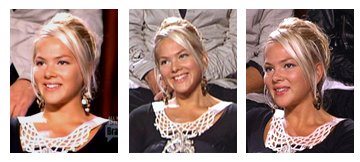 Her blonde smiling child-like cuteness sometimes makes her seem like she sprang from the pages of an old Dick and Jane reader.
Her blonde smiling child-like cuteness sometimes makes her seem like she sprang from the pages of an old Dick and Jane reader.
(I think I was one of the last to have used those books -- they were switching to more updated readers by the time my younger brother came along.)
I'm also reminded of the highly sentimentalized Victorian images of cherubic children:
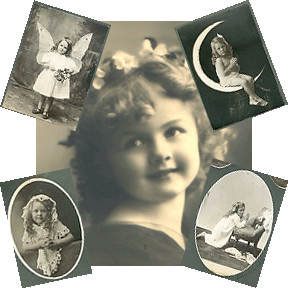
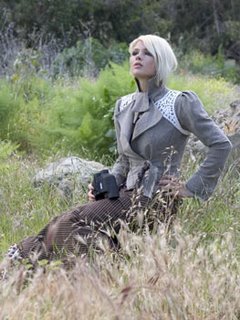
The lace in these photos is material that Alison uses in her fashion designs, which bring elements of Victorian style into modern urban clothing.
These cutesy Victorian images illustrate one of the reasons why ideas about looking so adorable has engendered over-the-top ideas images of Alison and various cartoon characters. It is impossible to take them seriously, or to even see them as anything other than incredibly silly.
Images of darling girls are not just kitchy products of popular culture. Victorian and Edwardian illustrators and painters often portrayed young girls (and young women) playing in the garden or at the seaside, as seen below in works by Pierre August Renoir, Jesse Wilcox Smith, and John Singer Sargent:
 (Above, right: Pierre August Renoir, A Girl with a Watering Can. 1876, National Gallery of Art, Washington D.C.)
(Above, right: Pierre August Renoir, A Girl with a Watering Can. 1876, National Gallery of Art, Washington D.C.) Even if you are not ethnically from a northern European background, if you have grown up in this country then you are familiar with this blonde-haired golden girl ideal.
After all, one of our oldest and most sentimental images of a cute child is Goldilocks. (And this image makes a number of different impressions on our consciousness: when I did a Google image search for Goldilocks the images were not all "family friendly.")
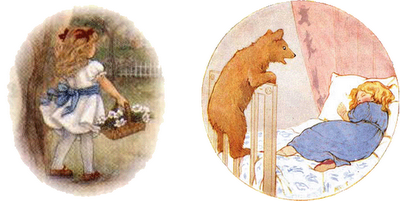
Indeed all of this girly cutesy stuff can be a little creepy.
 It seems rather unique that someone past the age of puberty can actually have the quality of being cute without some "What Ever Happened to Baby Jane" weirdness.
It seems rather unique that someone past the age of puberty can actually have the quality of being cute without some "What Ever Happened to Baby Jane" weirdness.What is cute in childhood usually isn't all that cute as an adult. Just look at the Olsen twins.
The italicized passage below gets into some more complicated ideas that you may want to just skip over if you are just reading this for fun and don't want risk getting a headache!
That is one reason why the adorability of Alison -- even on the physical level -- isn't entirely real. It would be would be too much. Her physical appearance is undeniably cute, but there is also an aspect that is fictional.
 What I mean is that this image of what is cute and adorable is something that we have seen over and over again in our lives; it is a history of associated images.
What I mean is that this image of what is cute and adorable is something that we have seen over and over again in our lives; it is a history of associated images.We see a particular look that reminds us of these previous images and ideas and we connect them together. At the most base level this is stereotyping. (See also: "For the Record".) Stereotyping relies on meanings that are only at the surface level.

The more we dig deeper into explorations about what things mean, the more we can develop meanings that are creative and significant. When we are being creative and intelligent about understanding the world then we develop meanings that evolve over time, building up layers of associations. Okay this is a subject that has filled many books and what I just said is not the final word -- but hopefully it provides a brief sense of what on earth I'm trying to prove here. At least it may answer the question of why I'd this nice "young woman on a tv show and "analyze her to death" like this? Because it isn't just about her -- I'm starting with her and digging into the layers of images in an attempt to tap into bigger ideas: cuteness, popular culture and art, memory and meaning.

 Alison Kelly is cute in a way that probably -- like puppies and kittens -- cuts across cultures. There are some things, like watching the baby panda cam, that are so cute you can't help but say "awww".
Alison Kelly is cute in a way that probably -- like puppies and kittens -- cuts across cultures. There are some things, like watching the baby panda cam, that are so cute you can't help but say "awww". 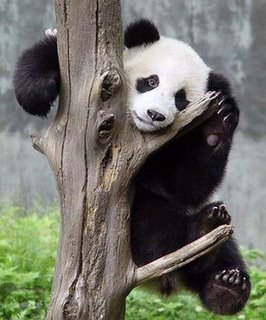
 The adorable girl also evokes particular images that come out of things like old story books . . . .and songs about girls in white dresses with blue satin sashes . . . (or is it white girls in gardens with blue blood relations . . . ?)
The adorable girl also evokes particular images that come out of things like old story books . . . .and songs about girls in white dresses with blue satin sashes . . . (or is it white girls in gardens with blue blood relations . . . ?)If the other people on the show have a split between the person they are and the media personality that we see, then Alison has a third persona: the icon of a lunatic hyper-cuteness, a figure that has been invented, mainly via the Project Runway blogs (fourfour has been especially brilliant in engineering this image of Alison).
This image interests me because it has taken on a life of its own that has no need to be grounded in any sense of the real person. (And, not for nothing: it makes me laugh.)
evidence to the contrary
 In fact, evidence of the person named Alison Kelly actually shows her to be a rather different person from the cuteness overload image surrounded by rainbows and carebears.
In fact, evidence of the person named Alison Kelly actually shows her to be a rather different person from the cuteness overload image surrounded by rainbows and carebears.Her closeness with Keith and Jeffrey indicate a penchant for the bad boys. (She's still young, she'll get over it).

I think that nice young man Emmett McCarthy looks like he could be a good influence on her.
(I believe that I just channelled my mother. My apologies.)
Anyway, when you appear that sweet and innocent it would seem natural to rebel a bit, to go against the grain somewhat, just to stake out one's sense of individuality.
Some of the various media outlets have produced something of an Alison backlash (say it isn't so!) among some of the fans.
The main source of discontent was her interview with Entertainment Weekly where she sounded rather bitter at times.
(Note: my experience with interviews is that the best one can hope for is that the person does not publish a so called quote or describe what you are saying in a way that conveys the exact opposite of what you meant. So I remind you that I'm not talking about the real person.)
In that article Alison blamed the models for being too big and having scoliosis for her not winning challenges. She blamed the stylist. She blame dthe judges. She described Laura's clothes as disgusting. She claimed that she was so innovative that she intimidated the judges.
 Not surprisingly, like everyone else on the show, she has an extremely high opinion of herself.
Not surprisingly, like everyone else on the show, she has an extremely high opinion of herself.It takes some balls to put oneself out into the public eye like this: you have to be confident about yourself. Or else you are insane. They are not mutually exclusive categories.
This doesn't make her a bad person -- no more than it makes Kayne or Laura or Robert or any of the other designers bad people. It just means that she is not, it would seem, as sweet as people originally thought based on her appearance.
Of course that image was so saccharine that any real human being would inevitably go sour. One can only disappoint. I marvel that she manages to sustain this image as well as she does. But then again, perhaps it isn't all that surprising. It would take a master cynic to not be charmed by her expressions of delight and wonder:

 Alison also appears to be professionally very precocious as both a savvy business woman and a talented designer who makes fabulous clothes. In fact she is my favorite of all the PR designers (with the exception of Jay McCarroll) in terms of making clothes that I'd be most likely to wear myself. (And if I could afford to I would.)
Alison also appears to be professionally very precocious as both a savvy business woman and a talented designer who makes fabulous clothes. In fact she is my favorite of all the PR designers (with the exception of Jay McCarroll) in terms of making clothes that I'd be most likely to wear myself. (And if I could afford to I would.) So none of this really fits the goddess of adorability fostered by bloggers which brings me back to my first point: I don't care that it isn't real and--more to the point--I don't think it matters.
 adoring adorability
adoring adorabilityFor one, it's hilarious -- this mix of reverence and absurdity that adores what is adorable.
It is not mocking the world of cuteness but celebrating it's insanity. We know that there is a lunatic quality to hypercuteness: the kind of loopiness that appeals to the most imaginative of all beings: six year old girls.
All that wonder and sweetness and magic festooned in pink and lavender and glitter is, to our adult eyes, utterly idiotic.
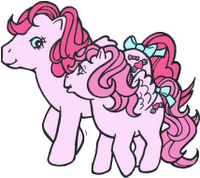 Furthermore, if you have ever had to listen to the music from My Little Pony or some other similar thing over and over and over and over again it starts to seem demented in a way that is almost menacing.
Furthermore, if you have ever had to listen to the music from My Little Pony or some other similar thing over and over and over and over again it starts to seem demented in a way that is almost menacing.(Even more scary is the way these things are marketed, turning evil in the hands of advertisers because they know how impressionable its young target is.)

But the giddiness that comes from cuteness overload is also strangly irrestistable. It is intoxicating to imagine what it is like to be able to transport oneself into this world -- without any cynicism and irony.
Like Santa Claus and the Tooth Fairy, a belief in the magic of cuteness is lost along the way.
It is so lost that we don't even notice when it disappears.
And we don't even miss it when it is gone.
elvis costello's alison
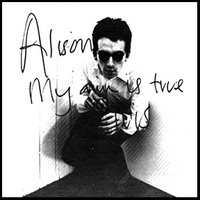 The fact that Elvis Costello's most famous song shares her name (and the same spelling) is for me just one more layer to the nostalgia. He's just enough older than I am that his early albums were being released during my high school and undergraduate years: the years of unhealthy obsessions and self-inflicted melodrama that is positively embarrassing a decade or two down the line; the years when one has a penchant for bad boys; the years when one's girlhood is smashed to smithereens.
The fact that Elvis Costello's most famous song shares her name (and the same spelling) is for me just one more layer to the nostalgia. He's just enough older than I am that his early albums were being released during my high school and undergraduate years: the years of unhealthy obsessions and self-inflicted melodrama that is positively embarrassing a decade or two down the line; the years when one has a penchant for bad boys; the years when one's girlhood is smashed to smithereens. 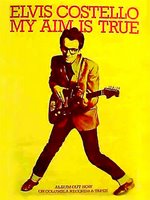 This was also the time when I attended the most concerts and in a way when popular music played its largest role in forming who I am. Elvis Costello is one of the most dominant of voices on my life's soundtrack. I wore out my tape of King of America playing it on my Walkman as I travelled through Europe in my mid-twenties.
This was also the time when I attended the most concerts and in a way when popular music played its largest role in forming who I am. Elvis Costello is one of the most dominant of voices on my life's soundtrack. I wore out my tape of King of America playing it on my Walkman as I travelled through Europe in my mid-twenties.My best friend freshman year was named Alison (also with one L) and so that song was played incessantly. She was bubbly and adorable and it seemed like everywhere she went guys would sing that refrain.
I was too cool for my favorite song to be Alison, of course. When the audience was yelling for him to play "Alison" I was calling for "Riot Act" or some such thing. It is so overplayed (and then Linda Rondstadt had to go and record it, thereby destroying the song for every EC fan) that we forget what a wonderful, sad, angry portrait it is of the way life takes its toll on what we love and how hard it is to let go of the things we love, or once loved.
oh alison my alison
The one Alison cannot exist without the other: the Alison that the world is killing (and, not for nothing, the one that we can truly love) and the imaginary goddess of adorability, bringer of sweetness and light, a lovely flaxen-haired maiden who arrives still trailing childhood's clouds of glory.
 So my point is that we may know that she doesn't exist but it is so much more fun to pretend that she does. We need the laughter, for one. And the more the image is pushed to its most saccharine extreme the more enchanted we become.
So my point is that we may know that she doesn't exist but it is so much more fun to pretend that she does. We need the laughter, for one. And the more the image is pushed to its most saccharine extreme the more enchanted we become.And that's entertainment.
It's just a tv show after all, but with enough creative use of photoshop, hilarious employment of screen caps, and some highbrow intellectualizing it can almost become art. Almost.

Victorian and Edwardian photographs
Sherman Hines Photography Museum: Adams Family Album
Alison Kelly - Dahl Clothes
I'll provide more references soon . . .













No comments:
Post a Comment